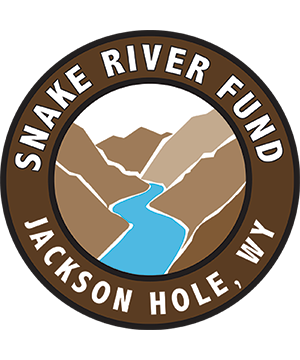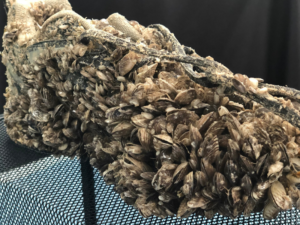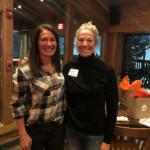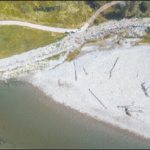What are Aquatic Invasive Species?
Aquatic invasive species (AIS) are organisms that are not native and cause significant harm to an ecosystem when introduced. Harmful impacts can occur to municipal water supplies, recreation, agriculture, aquaculture, and other commercial activities.
Aquatic invasive species including amphibians, crustaceans, fish, plants, and mollusks are currently present in Wyoming, most notably the New Zealand mudsnail and Asian clam. While these species cause problems and need to be controlled, the most significant known threat to Wyoming is from zebra and quagga mussels based on their proximity and demonstrated impacts in neighboring states.
We must do what we can to prevent aquatic invasive species. You can do your part by making sure your boat and gear is DRAIN, CLEAN, DRY!! Join us in the fight against aquatic invasive species – Watch Video – or considering giving to the Snake River Fund.
Wyoming’s 5 most UNWANTED Aquatic Invasive Species
Zebra/Quagga Mussel: They are widespread throughout the United States, most notably in neighboring Colorado and Utah. Invasive zebra and quagga mussels have not been found in Wyoming. Their impact can be prolific and completely infiltrate waters, rapidly. They remove nutrients from water, clog pipes and waterways, damage boats, and out-compete native mussels. They are transported in water on boats as microscopic larvae or attached to the hull, motor, or other hard surface of a boat as juveniles or adults. Typically striped and presence of byssal threads which allow them to attach to hard substances.
New Zealand Mudsnail: Distributed throughout the Western U.S. and Great Lakes. They are present in Wyoming in Yellowstone National Park, and in the Bighorn, Shoshone and Snake rivers. They are very prolific and can out-compete native snails and can alter water chemistry at high densities. Found in mud on fishing gear, especially waders. They can also disperse downstream through water currents once established in an area.
Asian Carp: They are widespread throughout the eastern United States, and have recently been found near the Great Lakes. They out-compete native fishes, reduce forage for other fish, and can transmit disease. Silver carp are also known for their ability to jump great distances out of the water when boats travel near them, causing injury to boaters. They are transported downstream in water and overland in bait buckets and illegally by people. Asian carp (bighead, black and silver carp) have caused substantial harm in other areas of the country, and you can make sure they don’t do the same in Wyoming.
Rusty Crayfish: Found in Wagonhound Creek in Wyoming. They are found throughout the United States, most recently in Colorado. These crayfish are voracious and out-compete natives and reduce plant diversity and abundance. They are spread unintentionally through baitfish introduction or by illegal introductions.
Aquatic Plants: Aquatic plants, such as Hydrilla, Eurasian watermilfoil, and Curly Pondweed can have huge impacts on fishing, boating, and even swimming in Wyoming waters. These plants can be found throughout the United States, and not all, but a few can be found in Wyoming waters. Read more on these invasive plants here.
Boaters can STOP THE SPREAD by following these three easy steps after you boat:
1. DRAIN all water from your boat including the motor, bilge, live well, and ballast areas.
2. CLEAN all mud, plants and debris from your boat. The plants can be invasive and mud and plants can also harbor other Aquatic Invasive Species.
3. DRY your boat well before using it in another water. We recommend drying it for at least 5 days in the hot summer, 18 days in the spring or fall, or 3 days in the winter when temperatures are freezing.
Click here to see an interactive map of locations of known AIS occurrences in Wyoming.
Information courtesy of our partner, Wyoming Game and Fish, and more information can be found on their website.
The Wyoming Game and Fish Department will conduct watercraft inspections at ports of entry, other border locations, and major waters around the state. These watercraft inspections will be marked with signs and all persons transporting watercraft must stop at these check stations. All watercraft using Wyoming waters are required to display an Aquatic Invasive Species decal.



